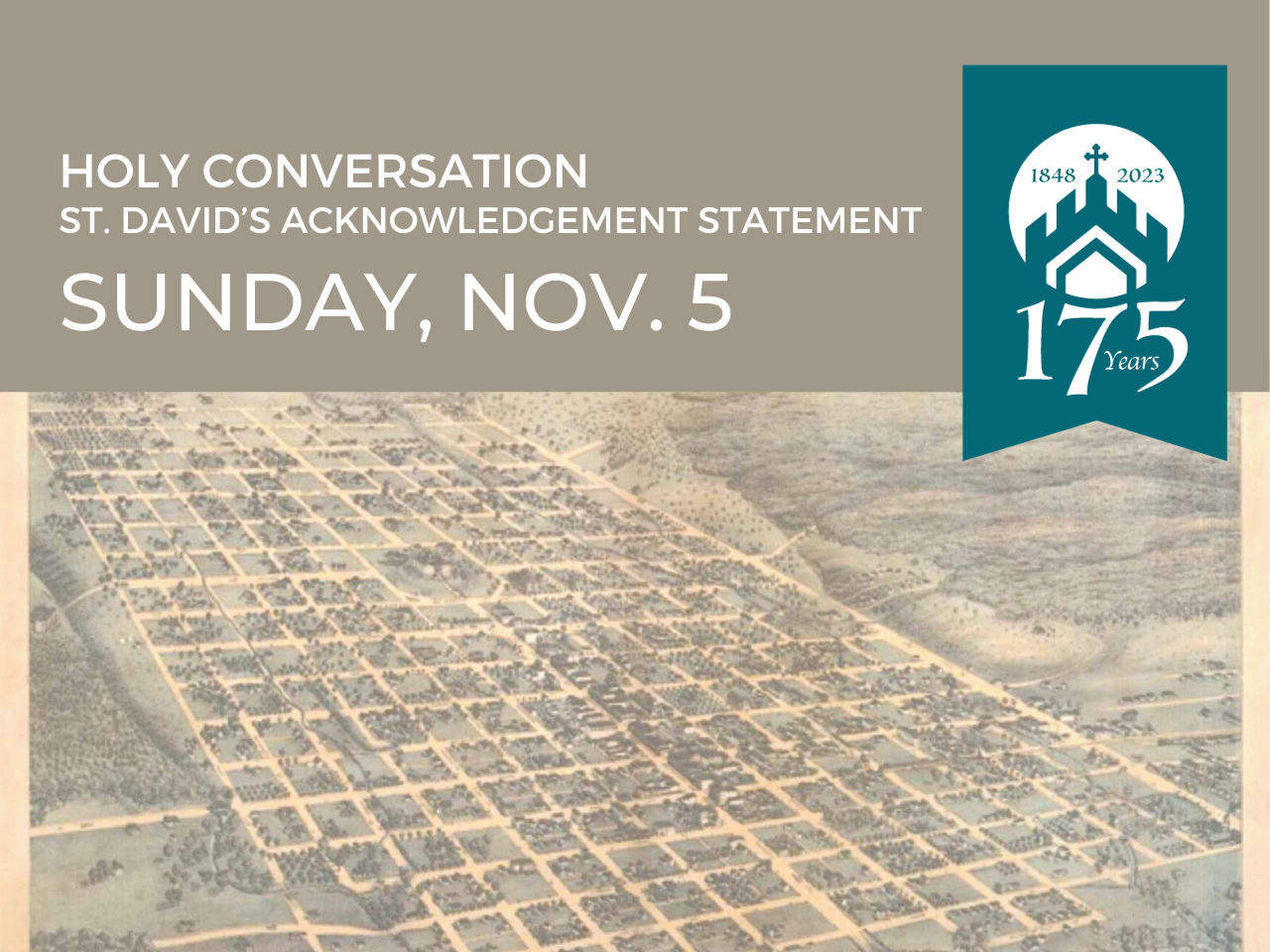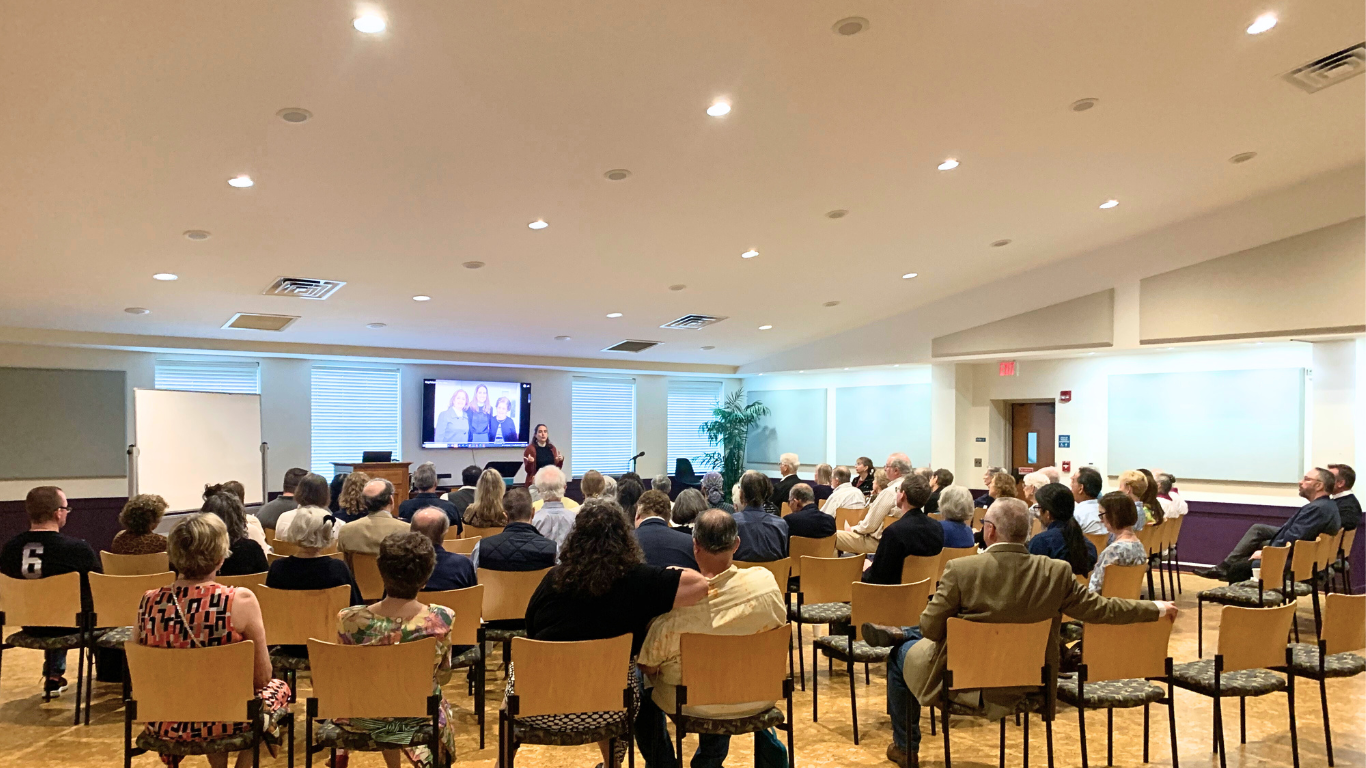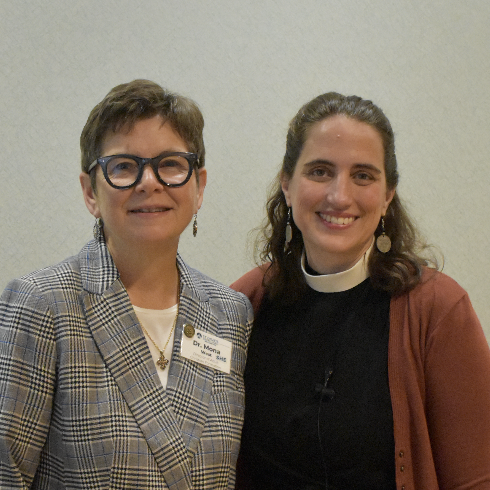
Register for lecture Zoom link
Why have an Acknowledgement of History for St. David’s?
On Sunday, Nov. 5, at 10 a.m. in Crail C (and Zoom) during our next Holy Conversation, the Racial Justice Committee will present a draft statement acknowledging parts of Saint David’s history that don’t appear in any of the printed histories of the church to date. As we prepare for this time, my mind keeps flashing back almost two months ago.
On Sept. 3, 2023, Father Chuck’s sermon was on Peter, the rock upon which the Church was to be built. But the focus wasn’t on the rock as foundation—rather on the rock as a stumbling block and the interplay between those two states. Taking a step back from the point at which Jesus calls Peter “Satan,” Father Chuck reviewed Peter’s ministry from the point where he became drenched taking his eyes off of Jesus when attempting a walk on the water, to being named the rock upon which the church would be built, to being called Satan, to pulling a sword on those arresting Jesus, to denying Jesus three times--Father Chuck traced Peter’s life—from (soggy) stumbling block to solid rock and back and forth, noting “I love it that our tradition holds on to both parts of who he is--that he is simultaneously solid rock and stumbling block over and over; I love it because it feels so familiar to me. It feels exactly like my own faith.”
I’ve been thinking a lot about rocks and stumbling blocks and thrashing about in the water since this sermon. And in the midst of my own treading water, the words from a gospel hymn written in 1971 called “The Lighthouse”—comparing Jesus to a lighthouse will not leave me:
I thank God for the lighthouse
I owe my life to Him
Jesus is the lighthouse
And from the rocks of sin
He has shown a light around me
That I might clearly see
If it wasn’t for the lighthouse
Tell me where would this ship be
Since at least the time of the penning of Matthew’s gospel Christians and Christian organizations have been extolled to be “a light to the world.” In 1630, bobbing on a sea similarly precarious to that on which Peter tried to walk, John Winthrop exhorted Pilgrims on their way to colonize Massachusetts Bay that they would be as a “city on a hill” after Matthew 5:14. At its 175th Anniversary, we of St. David’s pray that we “aspire to be a city on the hill, a beacon of your undying love for the world.”
But what is true for people as individuals is true for institutions and organizations they construct as well; they may be foundations on which communities are built and stumbling blocks at the same time; the light they give may provide comfort and warmth and a way to safety or may be beacons of danger to the stumbling blocks on which they’re built. The very same institution can be both life-giving and affirming to some AND be a complete barrier to others.
The city that the pilgrims built may have eventually provided warmth and light for them—but it became a beacon of danger and removal and death for Indigenous Peoples in the area within 45 years of Winthrop’s sermon; while many, including ourselves, have found comfort and light at St. David’s, the light may also have served as a warning beacon to those not welcome here, those relegated to the back of the church, those refused admittance—just as Peter was not the light but a rock on which a the very human institution of the church was built—and sometimes a stumbling block—the institution of St. David’s Episcopal Church is a rock from which a light hopefully shines. We hope people see Jesus shining from this vantage point—but the light of Jesus can also point out when St. David’s has been a stumbling block as well as a foundation stone of the city of Austin.
The lighthouse isn’t the light—it’s the container from which the light hopefully shines—the rocks on which the lighthouse is built—or the hill upon which it stands—may provide safe harbor or may pose a dangerous obstacle.
To be a pilgrim—whether in the 17th century or the 21st is to be on a journey, but church buildings and lighthouses are fixed geographically—they journey through time at a fixed geographic point—as we look back over the journey of the pilgrims who have called this location on a hill in Austin home, let’s celebrate when the location has served the larger community well and acknowledge and repent of when it has been a stumbling block in people’s journey towards light and community. May our more recent tradition reflect that of the stories of Peter–may it reflect both parts of who we have been–both rock and stumbling block. This is the purpose of the St. David’s Acknowledgement of History.
To move the metaphor a bit farther forward in the fifth chapter of Matthew, let us not hide our light under a bushel of half-truths or euphemisms about the past—let us bring our history—all of it—under the full, blinding light of Christ—that we may see where we’ve stumbled and where we’ve gotten it right—as a better navigational tool for pilgrims in the next 175 years.




Login To Leave Comment